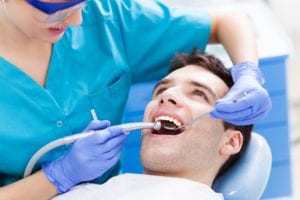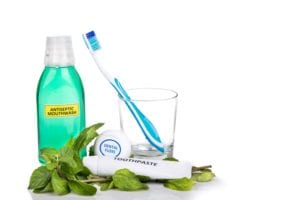3 Ways Modern Dentistry Has Improved

Dentistry has come a long way since its origin in ancient times. As early as 5000 BC, Sumerian texts have been found to attribute tooth decay to “tooth worms”. Later in 2600 BC, an Egyptian tomb was made for what is believed to be the first dentist. In the Middle Ages (700-1575) the official practice of dentistry started. During this time, there became specific training available for prospective dentists, or barbers as they were called then.
Throughout the 18th century, the field of dentistry continued to develop with the introduction of new techniques and dental materials. The 18th century was also when Pierre Fauchard, known as the father of modern dentistry, published a book that detailed the intricacies associated with dentistry including: anatomy, function, operative and restorative techniques, and denture construction.
The 19th century marked a time of scientific advancements and better dental education techniques. The year of 1846 was also the first time that dental anesthesia was successfully used during surgery. Later in 1859, the American Dental Association was founded by twenty-six dentists in Niagara Falls.
While dentistry has maintained some of its foundational routes through history, it has also advanced a great deal over the years. Dentistry as we know it today is much different than the dentistry of the past. To show just how much dentistry has evolved, here are three advancements of modern dentistry:

1. Patient Experience:
Out of all the improvements of modern dentistry, people are most grateful for the improvement of patient experience. While dentistry may have been complicated and painful in the past, modern dentistry is much more easy and comfortable. This can be attributed to the introduction of dental sedation starting in 1864 and the dental anesthetic Novocaine in 1905. Additionally, one of the first dental drills was developed in 1957, which helped to make dental procedures quicker and more precise. Later in 1958, fully reclining dental chairs were developed and implemented in many dental offices. While these chairs are primarily for the dentist to offer better dental care, they also contribute to patient comfort during procedures.
2. Dental Techniques:
Another improvement of modern dentistry are the various dental techniques that were developed over time. Since there are far too many techniques to mention, the focus will be on a few select techniques that have proven to be highly influential. The first of these techniques was dental implants. The first dental implant was made from Vitallium and was successfully placed in 1937.This marked the beginning of implant dentistry, which has developed a great deal since its initial introduction.
Another improvement to dental techniques is the acid etch technique used to adhere acrylic dental fillings to tooth enamel. This technique was first discussed in 1955 before being implemented as a common dental practice that is even used today. Finally, in 1990 cosmetic dentistry was born with the development of tooth-colored dental restorations.

3. Dental Hygiene Tools:
The final significant improvement of modern dentistry are the tools available for dental hygiene practices. Dental floss was one of the first dental tools that was introduced in 1815, but wasn’t marketed for dental use until 1898. Around this time in 1873, Colgate released a minty toothpaste. This was much different than toothpastes of the past which contained various things.
Still, the modern nylon toothbrush with synthetic bristles was not developed until 1938. Until that time, many people used chewing sticks or horse hair to brush their teeth. However, toothbrush technology evolved quickly and the electric toothbrush was introduced to American consumers in 1961. Around this same time, brushing twice a day was becoming a norm.
One of the final hygienic improvements was the introduction of fluoride into the dental world. The dental effects of fluoride in water were first studied in 1901. Years later in 1945, Grand Rapids, Michigan became the first city to have their drinking water fluoridated. Approximately eleven years later, it was found that the rate of dental decay in children had decreased by 60%. This led to fluoridated drinking water in many more cities, as well as the promotion of fluoridated toothpastes starting in 1950.
There can be no dispute that modern dentistry has improved greatly over time. Modern dentistry has been improved in terms of patient experience, dental techniques, and dental hygiene tools. These improvements have helped more patients feel comfortable seeking dental care and have helped dentists provide their patients with a positive dental appointment. Moving forward, it will be interesting to see what happens next.






Recent Comments